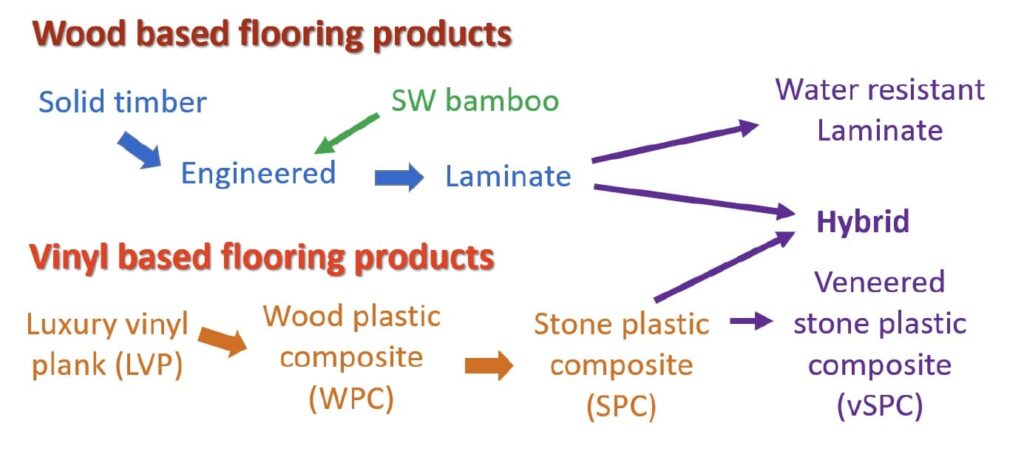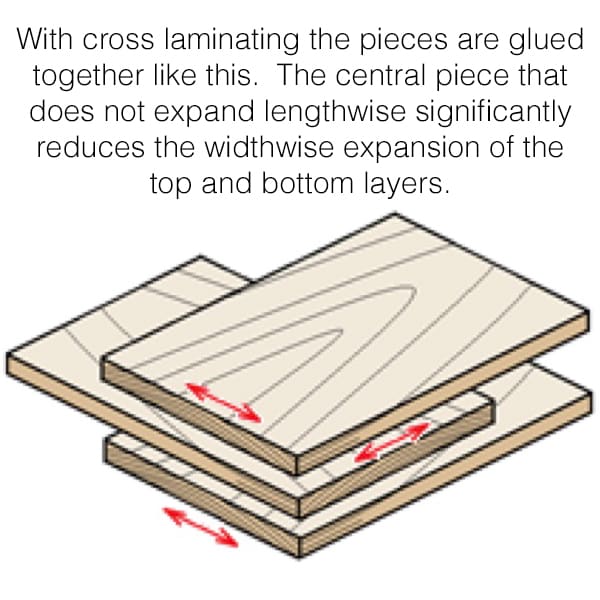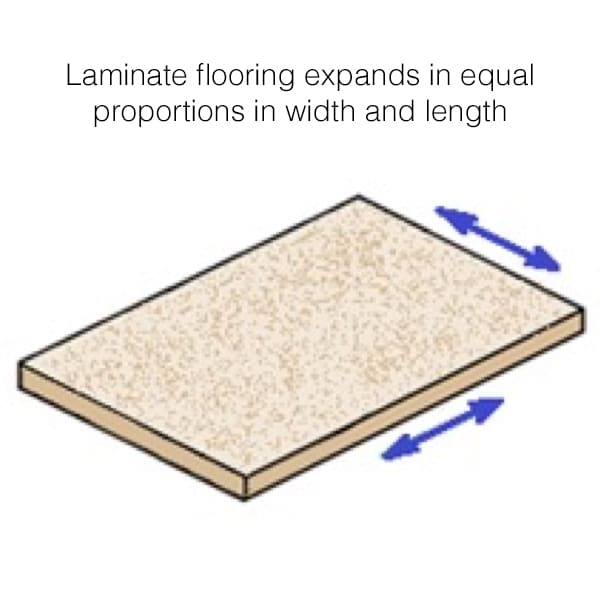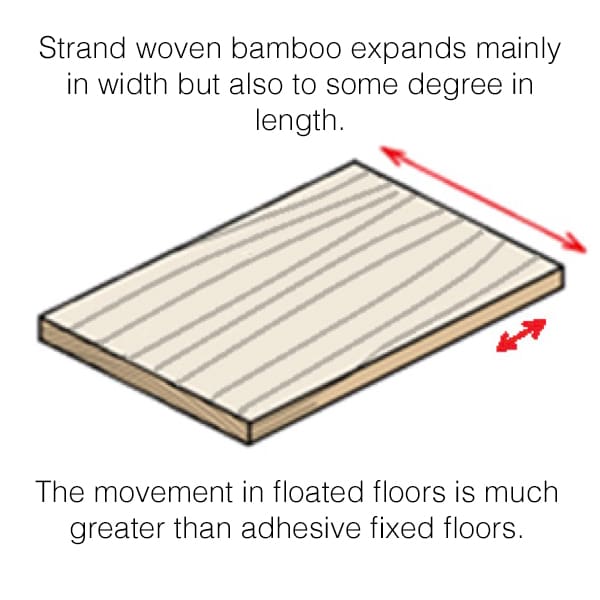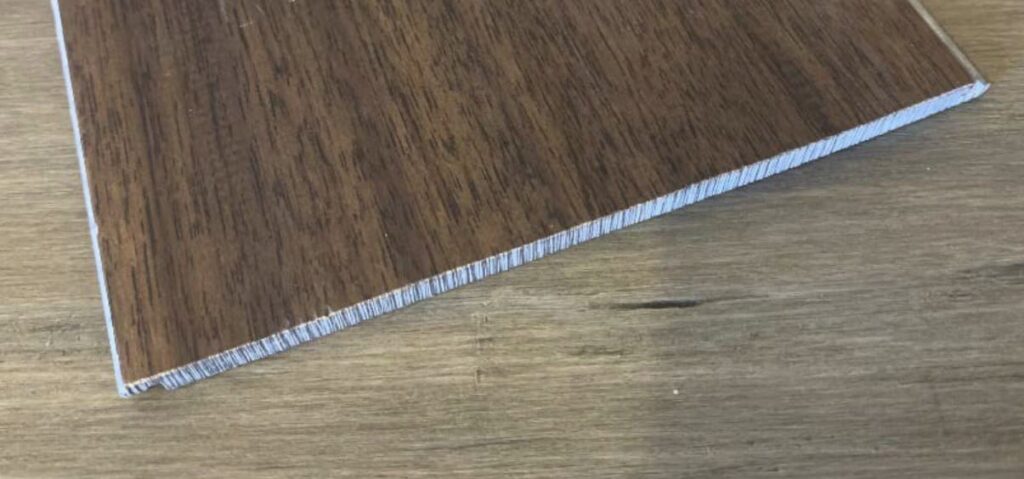There are many different products available in the market that have the appearance of timber, however most are not ‘real’ timber, but provide the appearance of a timber floorboard. This in many ways is a testimony of the value we all acknowledge in ‘real’ timber flooring to complement the décor in our homes. Techniques in the production of flooring board products is now so advanced that many can not tell the difference between a solid timber floorboard and one that is not. This may be seen as a positive providing an exacting appearance and some enhancements in performance aspects, but it can also provide confusion with owners not actually knowing what they have, and also confusion for those installing or repairing floors. The purpose of this information sheet is to provide a better understanding of the composition of each product type and to explain the main differences that exist between wood based flooring products and vinyl based flooring products.
Wood based flooring products
The sequence of photos below shows the range of wood based flooring products, and comprises solid timber flooring, engineered flooring with a lamella or veneer of solid timber generally over base layers of plywood or timber blocks, laminate with a photographic image of timber on the exposed face on a fibre board core layer, and strand woven bamboo which is comprised of strands of bamboo glued together as a board. Technically bamboo is a grass and not wood. However, we refer to these as wood based are they all have cellulose fibre within them that results in each swelling or shrinking depending on the relative humidity in the air. That is, all these products are hygroscopic where their moisture content and dimensions change depending on how dry or moist the air is around them.
SOLID TIMBER
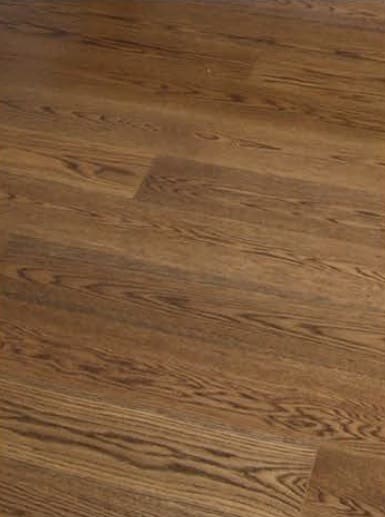
ENGINEERED
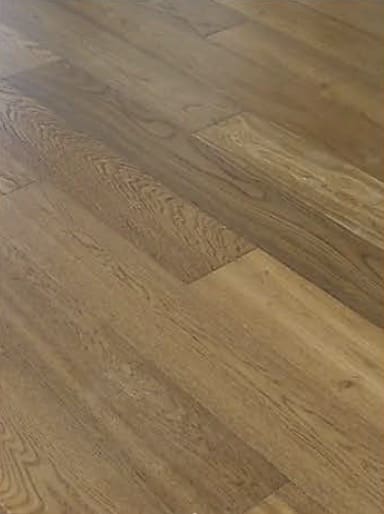
LAMINATE
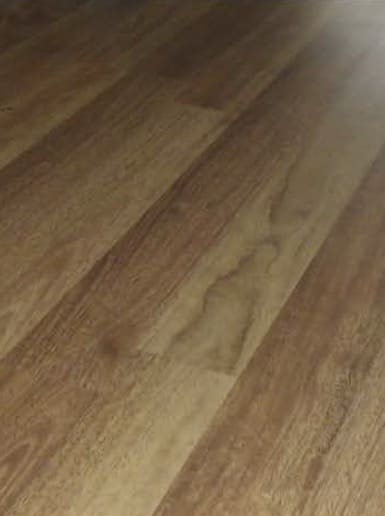
SV BAMBOO
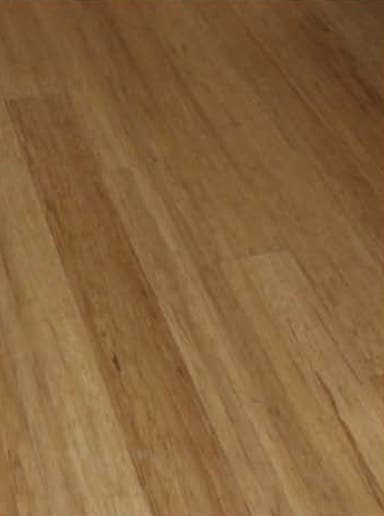
It is well established that with changes in air relative humidity that solid timber floorboards expand or shrink in their width and that lengthwise movement is negligible. This is why in basketball courts there are frequent gaps provided on installation, perhaps 10 boards apart, being parallel to the boards edges, but no similar intermediate expansion allowance perpendicular to board direction.
Engineered and laminate flooring was designed to significantly reduce the amount of width movement in boards with relative humidity changes and in achieving this, some lengthwise movement is introduced. Engineered flooring retained a ‘real’ wood surface and laminate chose a very hard wearing melamine surface.
Strand woven bamboo has a similarity to solid timber in that due to the orientaion of the fibres, most of the expansion and shrinkage movement is in the width of the board, but likely, due to some fibres not being well alligned, a small amount of lengthwise movement has been observed with in-servcie floors.
This movement, that differs between these products is explained further in the diagram below. What is important to understand is that all these products change dimension depending on the relative humidity of the air, and both the degree and ratio of width to length movement differs between the product types. Hence how this is catered for in an installed floor will also differ.
Vinyl based flooring products
The sequence of photos below shows vinyl based flooring products and comprises luxury vinyl tiles, wood plastic composite, stone plastic composite and hybrid. It is important to understand that these products while having the appearance of a timber floor do in fact have no wood in what you see. These products are plastic which has a beneifit in them being moisture resistance and therefore not subject to dimension change with humidity, however they are subject to dimensional change with changing temperature which similalry needs to be attended to at installation.
LUXURY VINYL TILE OR PLANK
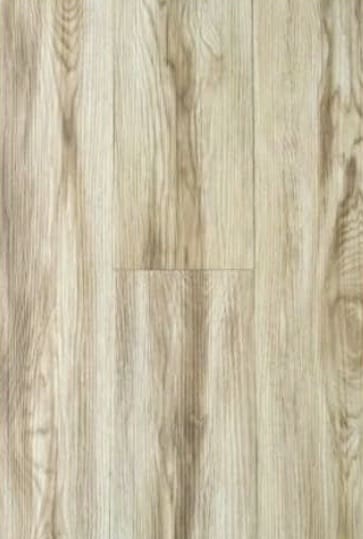
WOOD PLASTIC COMPOSITE
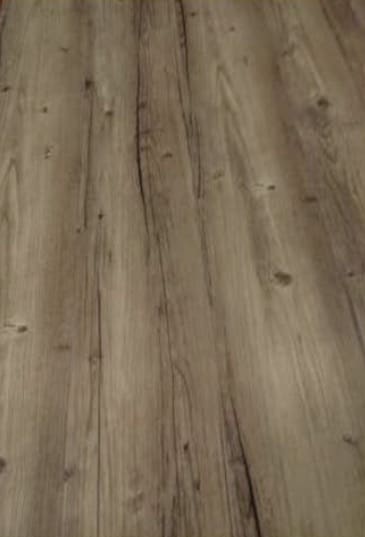
STONE PLASTIC COMPOSITE
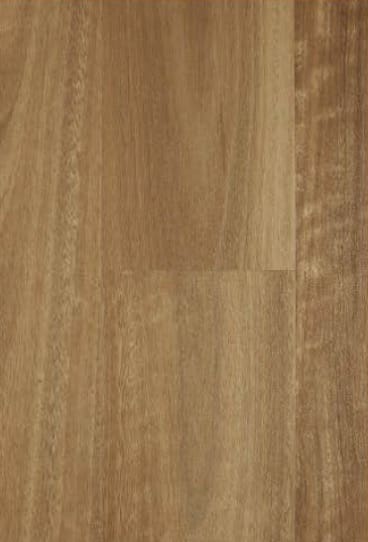
HYBRID
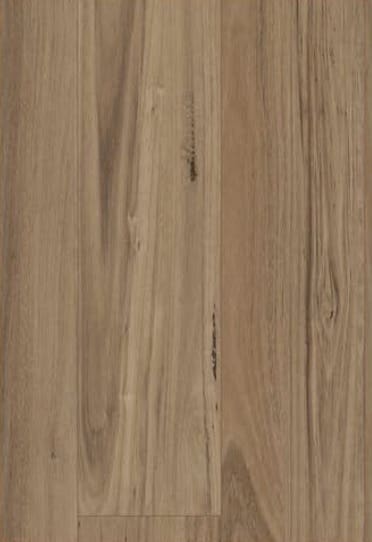
Luxury vinyl tiles came onto the market first as a click together flooring product and being like other vinyl flooring products with a foamed PVC core, the tiles were quite flexible. In order to make a rigid board, wood filler was added and WPC created, a relatively light weight rigid board. To enhance the product further the the wood filler was replaced with limestone and this gave the plastic a heavier core and sturdier feel under foot, and offering improved stability. The final product is Hybrid that combined that attributes of SPC with the wear resistant melamine face of laminate flooring.
It was indicated that vinyl based products expand and contract depending on the temperature. If the temperature rises then the flooring will expand in both width and length, and the contrary being that a lowering in temperature will cause the flooring to contract. The greater the variation between summer and winter, the greater the seasonal movement that will occur and therefore the need for trims within the floor.
Other products
There are two other products that derseve mention. The first is water resistant laminate where greater attention has been paid to the development of a more water resistant HDF (high density fibreboard) core and a coating system to the bevel and jointing system that is water repellant, thereby making water less prone to entering joints. But note that the product is not classed as being waterproof.
The second product is what has been termed by some as veneered SPC. This product has a solid timber veneer as the face layer over a stone plastic composite base. So the question is, is this a wood based product or a vinyl based product? As it acts more like a vinyl based product it is considered to belong with that type of flooring.
A summary of the product pathways
The diagram below provides a summary of what has been discussed above. It is clear that there is a lot of crossover between the newer products but that the delineating factor is that wood based products shrink and swell with changes in relative humdity and vinyl based products contract and expand with temeprature changes. Both types of products need movement allowance to be provided in the installation process, otherwise there can be performance problems with both product types. Also note, with reference to the diagram, that strand woven bamboo flooring can also be manufactured as and engineered board and that both Hybrid and veneered SPC have a foot in both camps.
